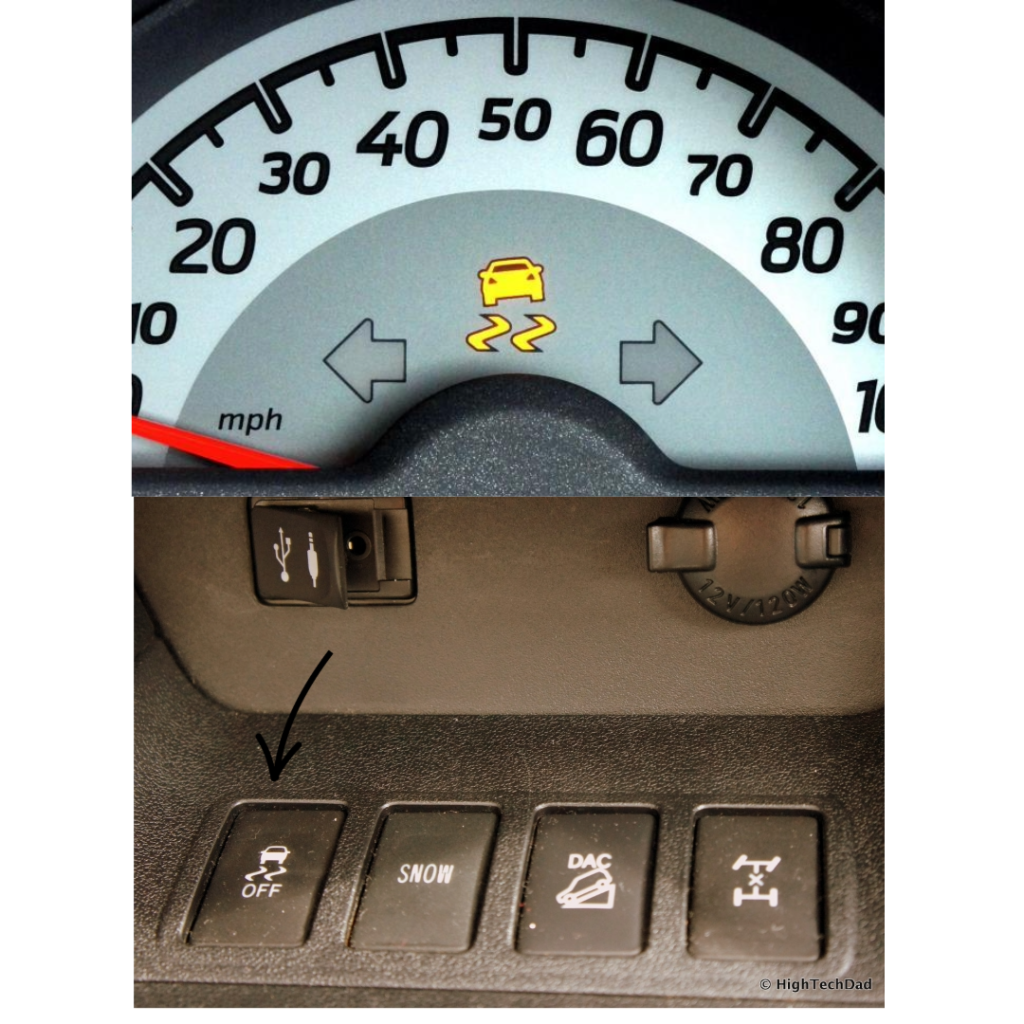
The season of waking up extra early to preheat your car and scrap off the snow and ice is upon us. If you live somewhere that gets snowfall, you know that driving in snow is dangerous and can be terrifying. In the event of a major snowstorm or freezing rain many people don’t take the risk. When possible, it is best to avoid driving under extreme conditions. But of course, you cannot always avoid driving in snowy weather. Consequently, how to drive in the snow is a skill that must be learned and practiced.
How to Drive in Snow – Safely
Drive Slow and Steady
Probably the most important tip of all to prevent an accident is to drive slow and steady. Do not press too hard on the brakes or accelerate quickly. Doing so causes skidding, which can cause you to lose control of your vehicle.
Make sure you start breaking two or three times earlier than you normally would. Lack of traction on slippery roads makes breaking take a lot longer. If you start breaking too late, you may not be able to stop, sending yourself into ongoing traffic.
Drive slow but take turns even slower. While turning, your wheels will have even less grip on slick roads. When you take a turn too hard your vehicle may begin to skid or spin out.
Be Extra Vigilant of Your Surroundings
It takes extra time to stop your car or dodge obstacles in the snow. Therefore, you should be looking further ahead than you normally would. It is also probable that someone may lose control of their vehicle and come sliding your way. Stay extra alert, an extra second of reaction time could save your life.
As you drive you should stay aware of the changes in road conditions. Some patches of the road are often much slicker and icier than others. Read more about different types of wintery road conditions to be aware of in more detail in the next section.
Assess Road Conditions and Weather
There are different types of snowy weather that you may drive through this winter. Some of these conditions are more dangerous than others, so it is important to know how to read the road.
- Shiny roads (ice or water): Shiny roads either mean ice or water, both are slippery and wet, allowing for little to no traction. Too much water on the road puts you at risk for hydroplaning, and any amount of ice puts you at risk of skidding and spinning out. Avoid breaking, accelerating or making turns while driving on shiny patches of road. If you must, do so very gently and cautiously.
- Slushy roads: If the weather is above freezing, snow can become slushy. These wet and messy road conditions are very tough to drive in. Like shiny roads, the wet conditions don’t allow for much traction and increase the likelihood of skidding and spinning out. Getting stuck is also a risk factor when driving through lots of slush. Avoid driving through thick patches of slush.
- Snowy roads (dry snow): When the snow is cold, dry, and crunchy, it may be a lot easier to drive through compared to ice, water, or slush. This is easier to understand when you compare walking on a slippery sidewalk to walking through fresh snow. However, the fresh coat of snow will not last long. As cars continue to drive through the snow and compact it down, it creates tracks that become increasingly slick and often form ice. When possible, it is best to create your own tracks rather than drive through an existing one.
Understand the Traction/Stability Control System

All cars must include a traction/stability control system due to a 2012 mandate. When the system’s light turns on or flashes, it means your car is losing grip and traction control has been activated. Traction control will kick in automatically unless turned off. Let off your brakes as your car is trying to regain traction.
Note that if your tractions/stability control light stays on for more than a couple seconds, it indicates that you are not getting any help from the system and there may be a problem that you should get checked out.
How to Combat Skidding
First things first, don’t slam on your brakes! This will often make skidding even worse. According to Car and Driver, there are two different ways to react depending on whether it is a front or rear wheel skid.
Front-Wheel Skid
When your front wheels lose traction, they will lose grip and you will begin to veer off the road. Braking or accelerating too hard, especially in a front-wheel drive vehicle, is often the cause. When this happens, let off the gas. You will not be able to steer until you regain traction. As you regain traction, position the wheel toward the direction you want to go.
Rear-Wheel Skid
When your rear wheels lose grip, your car will begin to spin. This is often caused by turning too quickly or hitting the brakes while turning. It also can happen when breaking very hard, causing your wheels to lock up. Or the issue can occur when you accelerate too fast. When this happens, do not press your brakes and lay off the gas pedal. Quickly turn the steering wheel in the same direction that the rear is sliding. Once the wheels regain traction, steer the wheel back in the original direction.
How to Use Your Anti-Lock Brake System (ABS)
Anti-lock brakes are installed in most cars that are out on the road today as a last resort to stop your vehicle as quickly as possible. You must hit your brakes to activate it. When you press on your brakes and feel chattering, you know that ABS has kicked in. If you’re driving through winter weather and feel your breaks shudder or chatter, then you know that the roads are very slippery.
If other methods of dealing with skidding do not work, or you are unable to react quickly, anti-lock brakes are a good tool to have. The system is activated only by hitting the brakes and is most effective when slamming on the brakes and not letting up until your vehicle comes to a complete stop.
According to a new mandate in September 2012, all new cars in the U.S must have ABS installed. ABS came about in the 1970s. So, you likely have ABS installed even in an older car. But you should do some research if you want to ensure your car has the system installed.
Why You Shouldn’t Resort to the ABS
The ABS is less likely to be effective than other techniques for dealing with skidding. Regardless, the ABS was created and became mandated because it statistically prevents more crashes than not for the average person. When nearing an accident, a common instinct is to slam on the brakes. Braking without ABS will make spinning or sliding much worse. The ABS does an effective job at reducing this damage and helping the vehicle stop. But the system isn’t magic. If you know how to combat skidding without using it, you will be much better off.
Assess the Traction using ABS
If you’re curious about the road conditions while driving, you can use the ABS to assess them. When no other cars are around, try to activate the ABS for a couple of seconds by gently pressing on your brakes. If the ABS kicks you will hear chattering. When this happens, the roads are slick. If you are able to slow down a good amount without the system kicking in, the ground is likely fairly dry.
Life Saving Investments That Help You Drive in the Snow
Winter Tires Exist to Help You Drive in the Snow
According to Car & Driver, purchasing a set of winter tires is the best thing you can to protect yourself from an accident this winter. Winter tires are often called snow tires since they were built for driving in the snow. No other type of tire can beat snow tires when it comes to maintaining traction and handling winter conditions.
Four-Wheel Drive Helps You Drive in the Snow
Four-wheel drive distributes power to all of your tires rather than just two. It was designed to increase traction which prevents slipping or getting stuck when driving on rough terrain. This makes four-wheel drive ideal for driving in winter conditions.
Don’t Let Four-Wheel Drive Make You Overconfident
Although four-wheel drive will give you a bit of extra grip, it’s not magic. Your vehicle will still likely slip on ice or get stuck in high snow even with four-wheel drive. But without it, you will slip and get stuck a bit more easily. So, before you go racing through a blizzard in your new four-wheel drive vehicle, remember that you will never be completely resilient against ice.
Prepare Before You Drive in the Snow
Preparing to drive in the snow before taking off onto the roads could prevent crashes, visibility issues, or breaking down in the cold. It is also important to stay prepared in case you find yourself stranded or in a ditch. These preparation techniques will help you prevent tragedies and inconveniences.
Travel Safety Tips from Hanover Insurance
- Check, change, or top-off your oil, coolant, brake and transmission fluids.
- Replace your windshield wipers. Did you know experts recommend changing your windshield wipers every six months? To make sure your wipers are able to push through the snow, you should be sure to replace them at least every winter!
- Clean your windshield inside and out to increase visibility.
- Check your headlights and taillights. If it has been a while since you’ve changed them, consider doing so. If one goes out it will be difficult to see. You also could get a ticket!
- Check your Tires. Make sure they have been rotated, have enough air, and are not too old and worn down.
Keep Emergency Supplies in Your Vehicle
In the event you crash, end up in a ditch, or your car breaks down and you are stranded in the cold, you should keep some emergency supplies in your car. Sometimes you may be able to get yourself out of the situation with jumper cables or a shovel. But in the event that you need to call for help, it can often take hours for someone to arrive. Some important emergency supplies include items to keep warm in the cold or a portable charger to ensure your phone doesn’t die before help arrives.
- Blankets
- Hats
- Gloves
- Portable charger
- Non-perishable snacks
- Water
- First-aid kit
- Jumper cables
- Tow strap
- Tow eye screws (if you don’t have a hitch or bumper-mounted tow hooks)
- A bag of salt, sand or cat litter (used to add traction under your tires when stuck)
- A shovel
Choose your Route Wisely Before You Drive in Snow
If possible, choose a route that is on a main road. Main roads are more likely to be plowed and salted. The longer you can drive on main roads, the better. It is also smart to plan ahead by studying what the terrain is like if you are unfamiliar with the area.
Heat up Your Car
It is vital to let your car warm up to let the windshield and windows defog. Driving with foggy windows can make it very hard to see, which is very dangerous. Additionally, heating up your car makes it a lot easier to scrap off the ice on your windows. Don’t forget to start your car an extra few minutes early before leaving for work!
The Aftermath of Auto Accidents
When all else fails, you need a good auto insurance plan to back you up. Accidents happen, sometimes even when you do everything in your power to avoid it. Car repairs are extremely expensive, and costs are at an all-time high in the heat of inflation and the supply chain crisis. In turn, the cost to repair your vehicle or for a rental is unbearably high without insurance.
Unfortunately, this means that insurance rates are also on the rise. Even more unfortunate, insurance companies didn’t react quick enough during Covid-19 and now they lost money that they must earn back. But, with the help of a good independent insurance agent, you will be able to get the coverage you need at the lowest possible price.
TDA Insurance & Financial Agency
TDA Insurance is a family-owned, independent insurance agency located in the heart of Walled Lake, Michigan. AT TDA, we take pride in treating our staff and clients like part of the family. Because we are a Michigan based agency, we know what coverage is important to have during the frigid winter months. We understand the minor differences between different carriers and plans, what they have to offer and what they exclude. We always do everything in our power to make sure our clients are covered, informed about their coverage, and keep within their budget.
Visit our website OR contact a TDA agent for a FREE quote today!
Contact a TDA agent today with any questions or concerns you may have.
